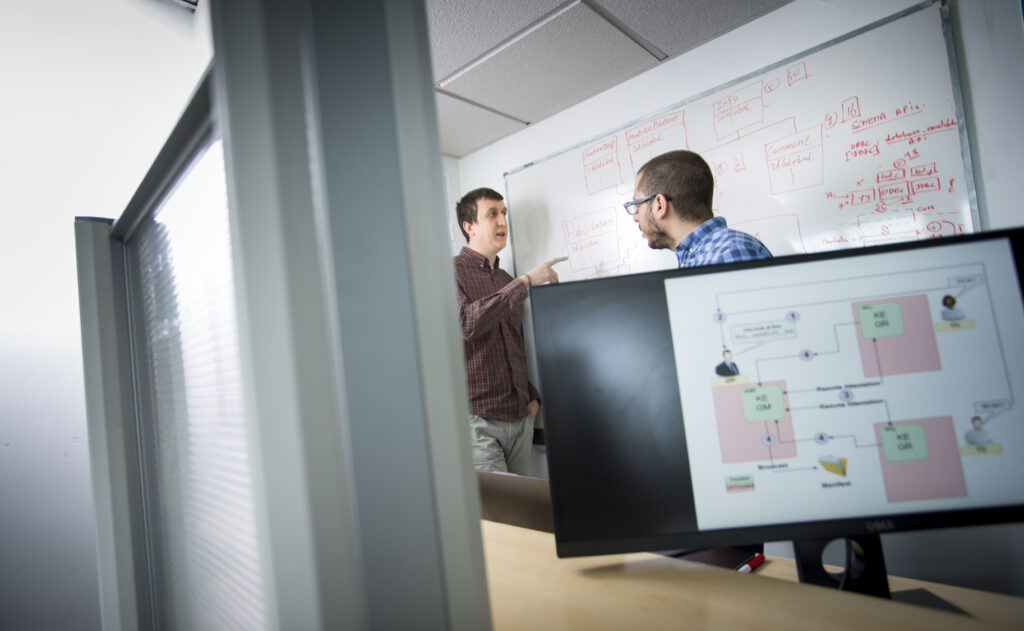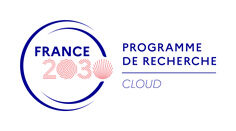Supporting sovereign cloud research
From its emergence in the early 2000s to its mass adoption for data storage today, Cloud Computing is currently facing some major technological challenges.
At the forefront of these challenges is “Edge Computing”, which involves maintaining a continuum between Clouds (hosted in “datacenters”) and IoT devices thanks to a massively geodistributed federation of small datacenters placed at the edge of the network. Such a continuum is necessary to enable data to be processed as closely as possible to usage, and to promote the development of tomorrow’s IT applications (smart cities, e-medicine, autonomous vehicles, etc.). It also offers a major opportunity to regain control of a market dominated by the GAFAMs, jeopardizing Europe’s sovereignty.
The software stacks developed for today’s Cloud infrastructures are unable to take these changes into account at almost any layer. Indeed, these solutions were not designed to integrate the intrinsic characteristics of this new type of infrastructure, such as heterogeneity, the mobility of storage and processing resources, or the fact that these infrastructures are potentially managed by a number of different operators.
We find ourselves in a situation where these data centers, which were built on a massive scale, no longer make sense in the face of our sovereignty and security challenges. We are now faced with real data management and responsiveness issues. Paris, with its thousands of cameras, is a striking example. If we had to process information from these cameras and analyze it quickly, we wouldn’t be able to do so, since it’s not technically feasible to send all video streams to a centralized datacenter all the time”, explains Adrien Lebre, director of PEPR Cloud for Inria.
Transversal dimensions such as security and energy also need to be strengthened. From a security standpoint, traditional mechanisms need to be adapted to take account of the increased attack surface induced by the Cloud-Edge-IoT continuum (more data, more heterogeneous datacenters, more connected devices, user and resource mobility, heterogeneous access networks, etc.).
We can no longer see these infrastructures as built on a continuum. We’ve built something that’s bigger than us every day.
Frédéric Desprez, Director of the Inria Research Center at Grenoble Alpes University
On the energy side, Edge infrastructures offer more opportunities and levers for action (renewable energies, reuse of energy dissipated by cooling, reduction of data movements, etc.) than large centralized infrastructures. In addition, we plan to address a number of issues relating to taking into account and optimizing the energy footprint of each application.

A PEPR to keep pace with changing needs in the field
A reflection shared by several players in the sector, including Inria and the CEA, who have been entrusted with steering the PEPR Cloud in 2021, launched by the Government as part of the national Cloud strategy. This PEPR, which has a substantial budget of 51 million euros, aims to continue and intensify the French research effort around the Cloud, but also to facilitate the transfer of innovations and solutions resulting from research to industry and the main open source communities.
As technologies evolve, so do needs and demands… It is therefore important for France to accelerate research into Cloud Computing in the broadest sense, and in particular into the applications we are building or rather will build on top of it (smart cities, industry of the future, telemedicine, augmented reality etc.).
Adrien Lebre, Director of PEPR Cloud for Inria
The CEA and Inria, who decided at the outset of the PEPR project to work with representatives from CNRS, ITM, UDICE and CDEFI to draw up the program’s roadmap, have identified a number of major areas of work: lifecycle management of infrastructures and the applications running on them, supervision, continuum data management, new hardware and virtualization, as well as the two cross-cutting issues of security and energy management.
The aim behind these lines of work is to study all the software layers of tomorrow’s clouds, from the lowest to the highest layers, and to do all this in a secure and frugal way: infrastructure supervision, data management, virtualization management, information retrieval, energy management at all levels, etc. We need to take everything into account, from the most basic to the most advanced. Everything has to be taken into account.
Frédéric Desprez, Director of the Inria center at Univer
A three-part roadmap
The first stage of the program was to map the research community, which made it possible to draw up a complete inventory of the players involved in research dedicated to the Cloud, in order to link them to the subjects defined as strategic.
In parallel, seven priority projects have been identified for this PEPR. Five of these concern the software layers needed to deploy tomorrow’s distributed clouds, and two focus on the cross-functional aspects of infrastructure security and energy management, as mentioned above.
The PEPR roadmap also includes a call for projects focusing on two areas: firstly, algorithmic work to optimize certain performance and reliability criteria of the software stacks developed, and secondly, the impact of different application domains on the actual design of these software stacks. Finally, the program includes a test bed in the form of a distributed experimental infrastructure. “The overall idea is to give the sector the keys to make a major transition, moving from a world where we have a few “mega” datacenters run by the GAFAMs, to a more decentralized model with processing and storage resources as close as possible to usage,” concludes Adrien Lebre.

